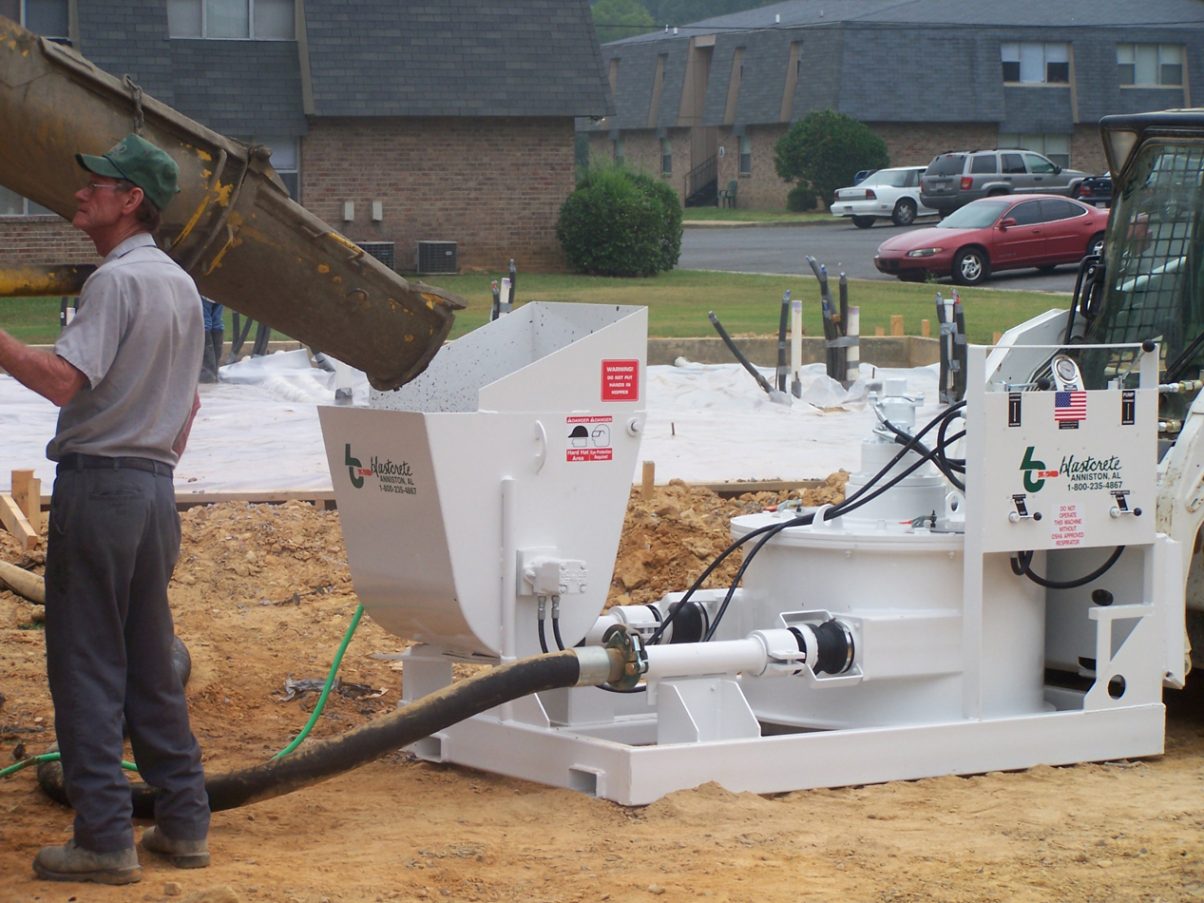Proper cleaning and maintenance can extend the life of your shotcrete equipment, contributing to the long-term success of your operation. While time consuming, skipping basic cleaning and maintenance can end up costing even more time and money. Consider these cleaning and maintenance tips to keep your pumps in optimum working condition.
High-Pressure Hydraulic Swing Tube Piston Pumps
Hydraulic swing tube pumps generate more than 2,000 psiline pressure. These pumps are commonly used for shooting mixes extreme distances in refractory applications and other demanding shotcrete operations.

Cup seals, or piston cups, attach to the end of the hydraulic rams and are the most common wear parts on swing tube piston pumps.
Keep the hydraulic pumping pressure as low as possible to prevent premature wear and conduct routine preventative maintenance on primary wear parts of the concrete pump. Cup seals, or piston cups, attached to the end of the hydraulic rams are the most common wear parts on these pumps. Also, regularly check poly packs, the wear plate and wear ring.
Properly clean the pumping system after each use to maximize the life of the cup seals and material pumping tubes. A swing-out or hydraulic-lift hopper offers easy and quick access for cleaning and maintenance.
Grease the outgoing housing, swing tube shaft and swing tube cylinders each hour during operation. Consider automatic lubrication systems for swing tube pumps, which can drastically reduce maintenance costs and increase ROI.
Low-Pressure Peristaltic (Squeeze) Pumps
Hydraulic peristaltic pumps are extremely simple and safe to operate. Used for lower pressure concrete pumping, grouting, plastering, cellular concrete and shotcrete applications, they generate more than 450 psi of line pressure and do not pump material extremely long distances. However, they excel at pumping materials within 250 feet horizontally and 50 feet vertically. These units run in reverse to remove blockages or obstructions without damaging the pump. They can also be operated as a skid steer concrete pump attachment or by other equipment with auxiliary hydraulics.
The rubber pumping tube is the only wear part on squeeze pumps, which makes them the most economical. Maintenance costs are typically less than $1 per cubic yard of pumped material. Keep a log of the amount of material pumped through each pumping tube. After noticeable wear, remove the tube, flip it 180° and install it back on the pump.
You can easily clean peristaltic concrete pumps with a round sponge ball since no concrete comes in contact with the pump’s moving parts. The concrete is simply pumped out of the hopper and the sponge ball is sucked into the pump’s inlet pipe. Next, flood the hopper with clean water. The sponge serves as a dam between the concrete being pumped and the cleanup water. Engage the pump and the water pushes the ball through the pump and delivery system for a quick and simple cleanup.
Rotary Gunite Machines
 Like high-pressure hydraulic swing tube pumps, rotary gunite machines can be used for vertical and horizontal refractory placement.
Like high-pressure hydraulic swing tube pumps, rotary gunite machines can be used for vertical and horizontal refractory placement.
To keep your gunite machine in good condition, start by examining the wear parts of the rotor section — including rubber pads and friction discs. You can inspect these by rotating the top plate of the rotor section 180 degrees.
Delivery lines and the couplings that connect them should also be inspected and cleaned with each use to maximize longevity and ROI.
Adequate material hydration is the key to a successful gunite process. Always ensure the nozzle is in good condition, the water ring inside the water body is clean and holes are clear of material buildup before connecting the water source.
When the job is done, make sure that all of the material in the hopper, rotor section and delivery line is evacuated.
No matter the pump type, proper cleaning and maintenance will go a long way toward reducing downtime and repair costs, meaning more profits in your pocket. Contact our experienced staff for troubleshooting and other shotcrete equipment maintenance tips.

